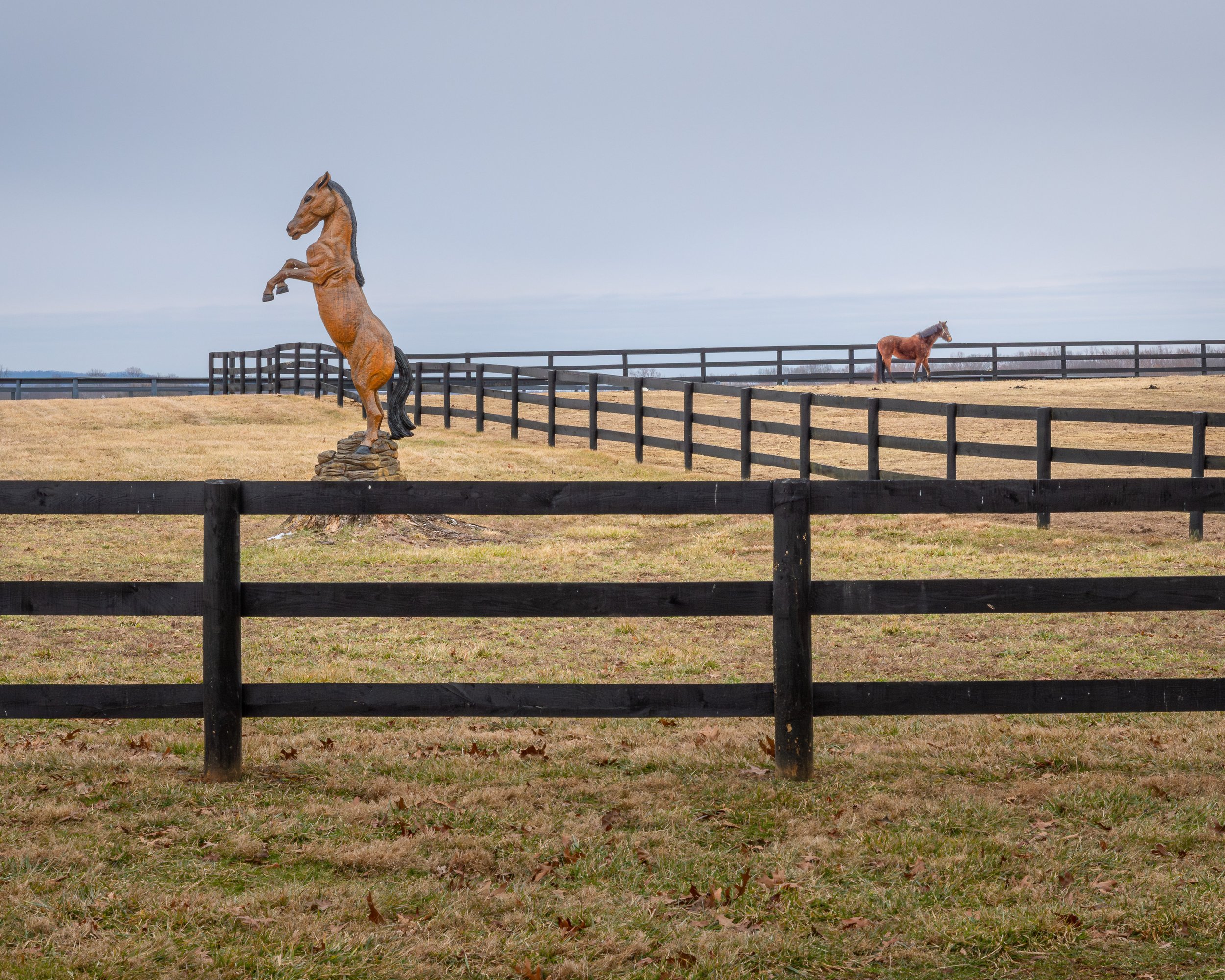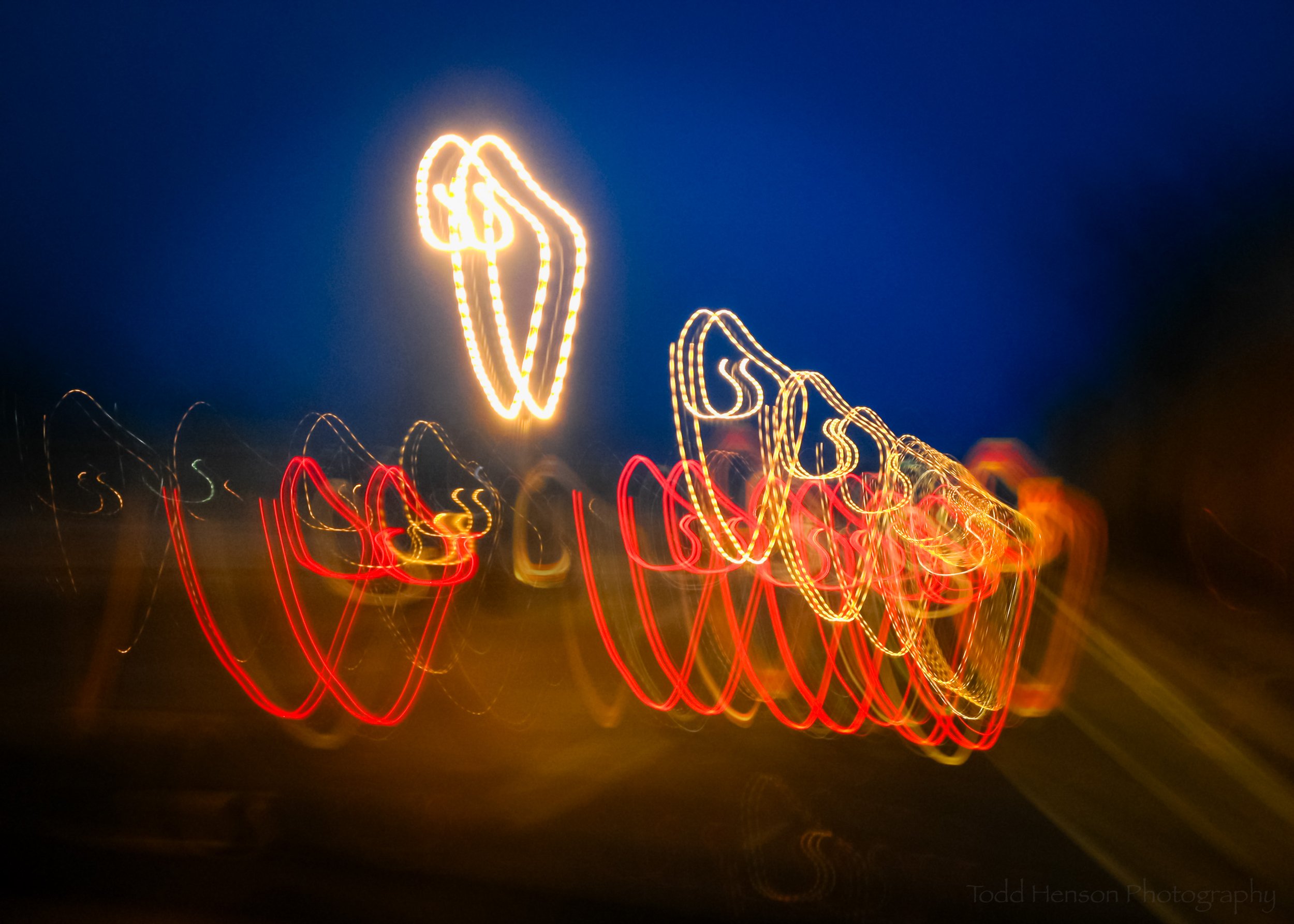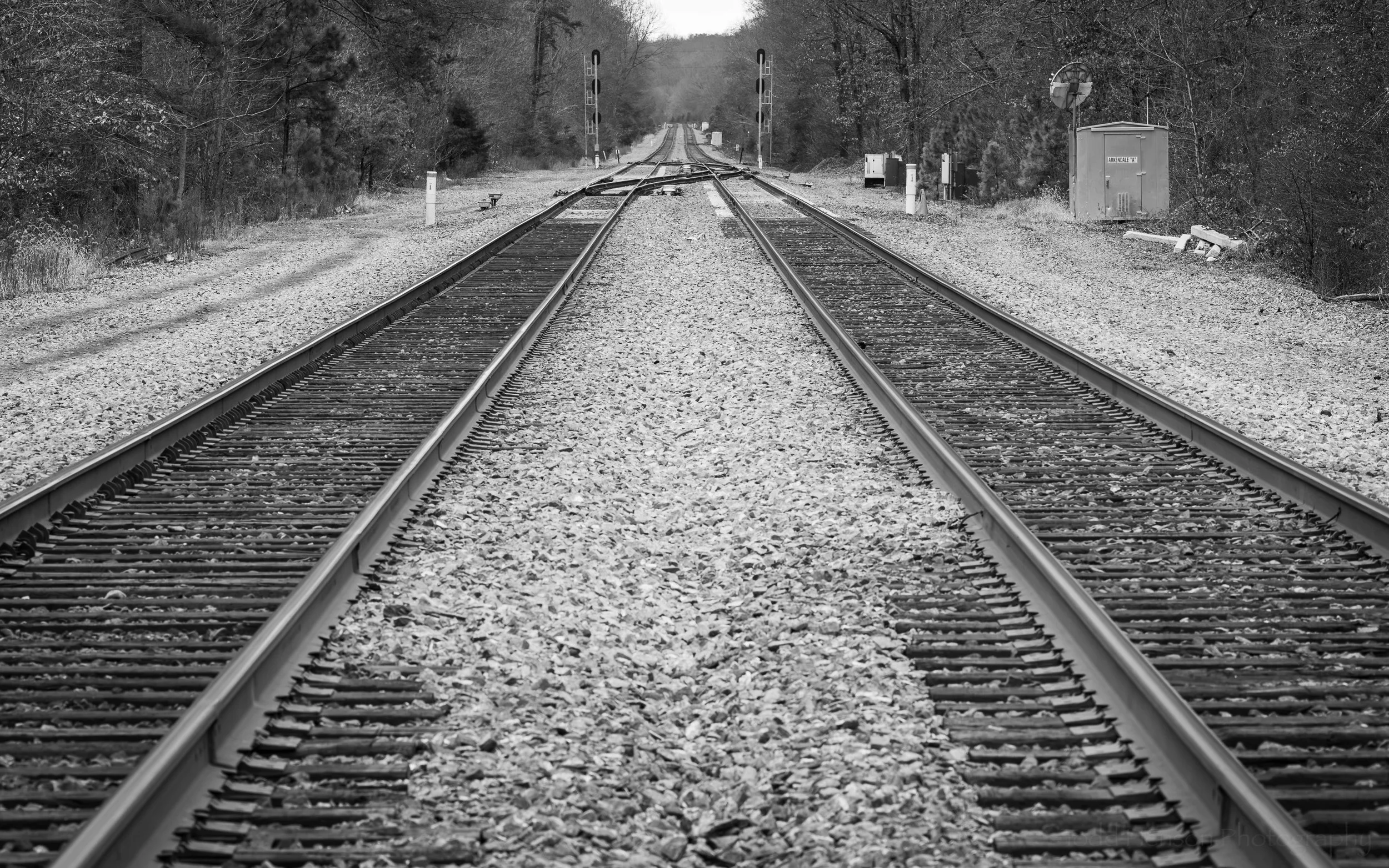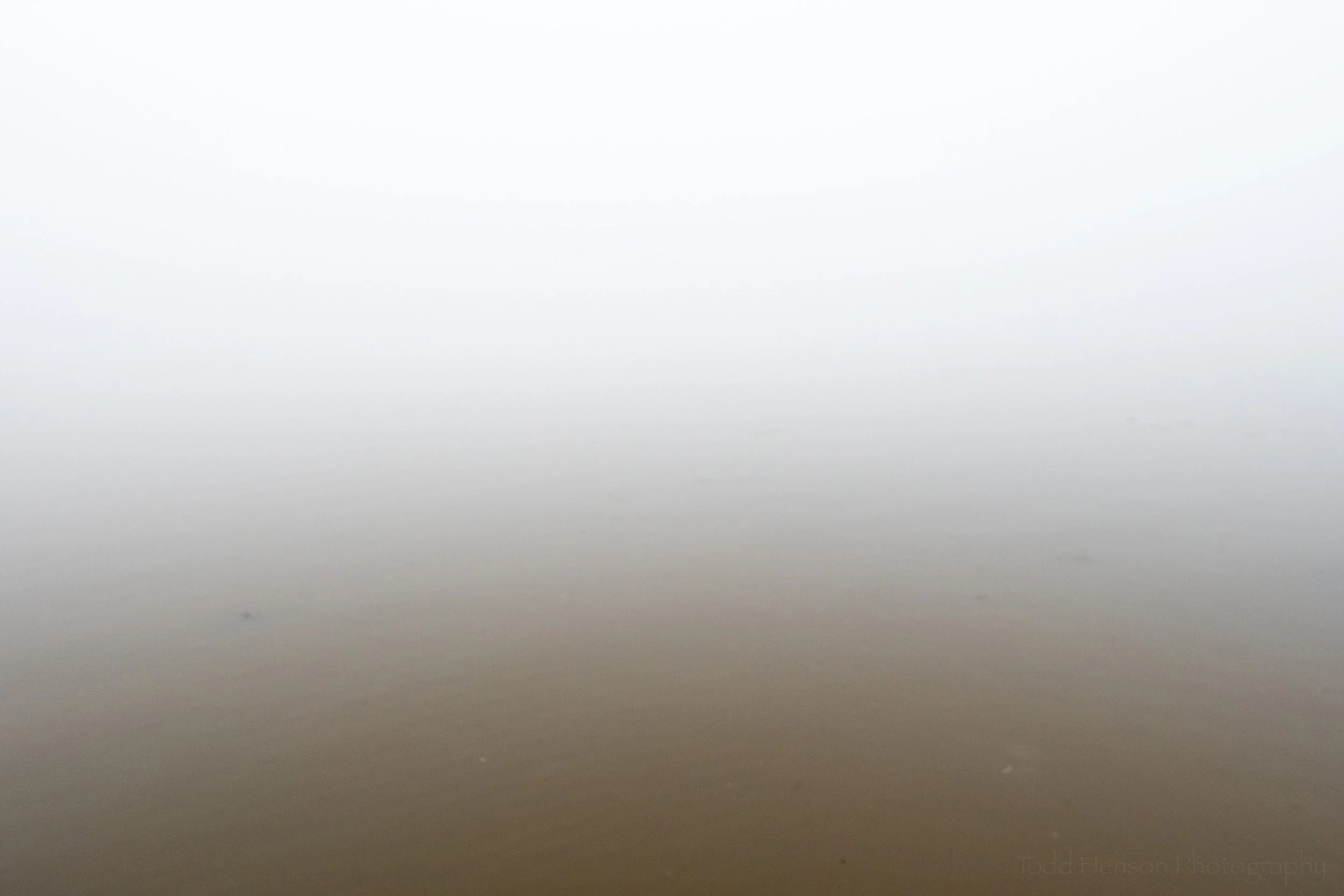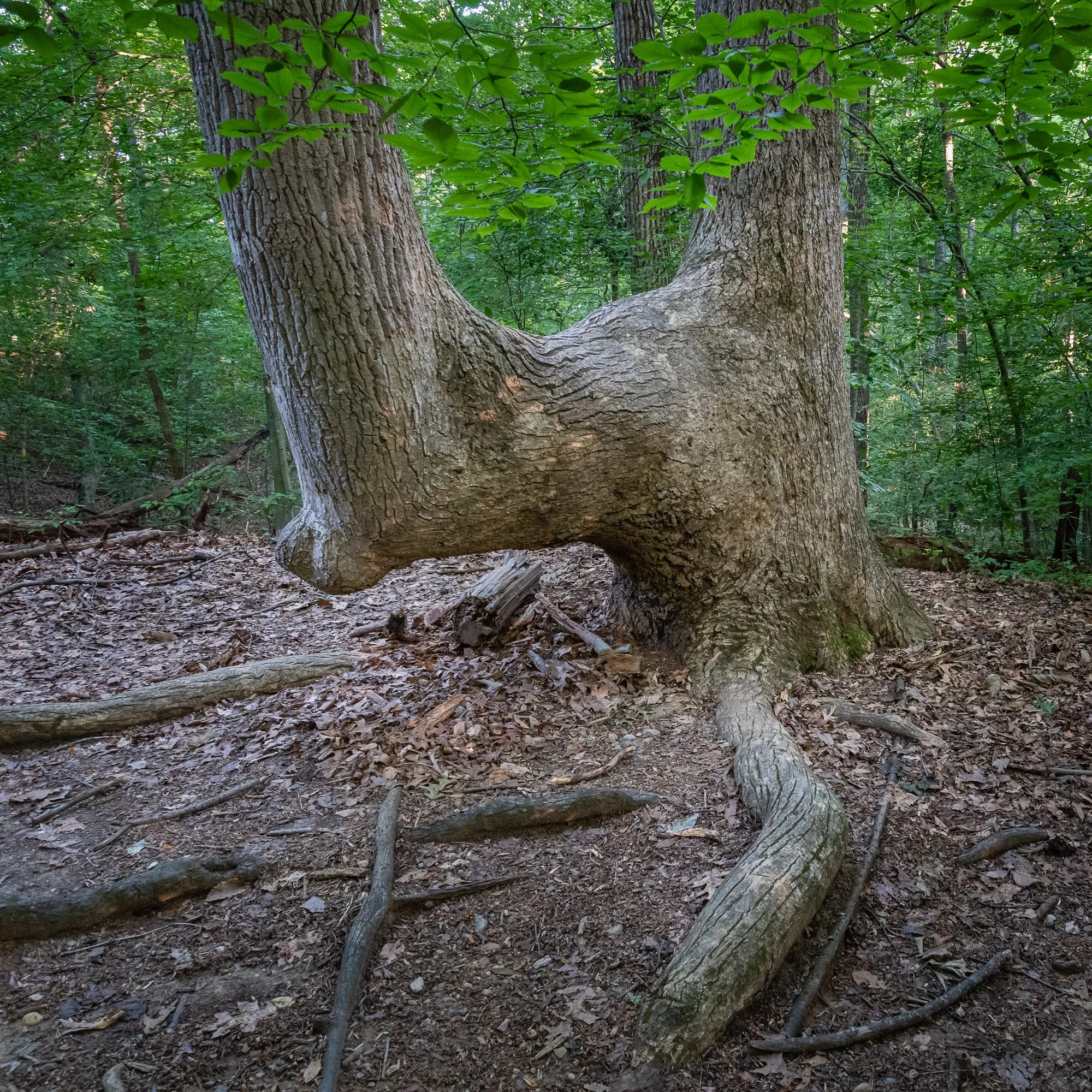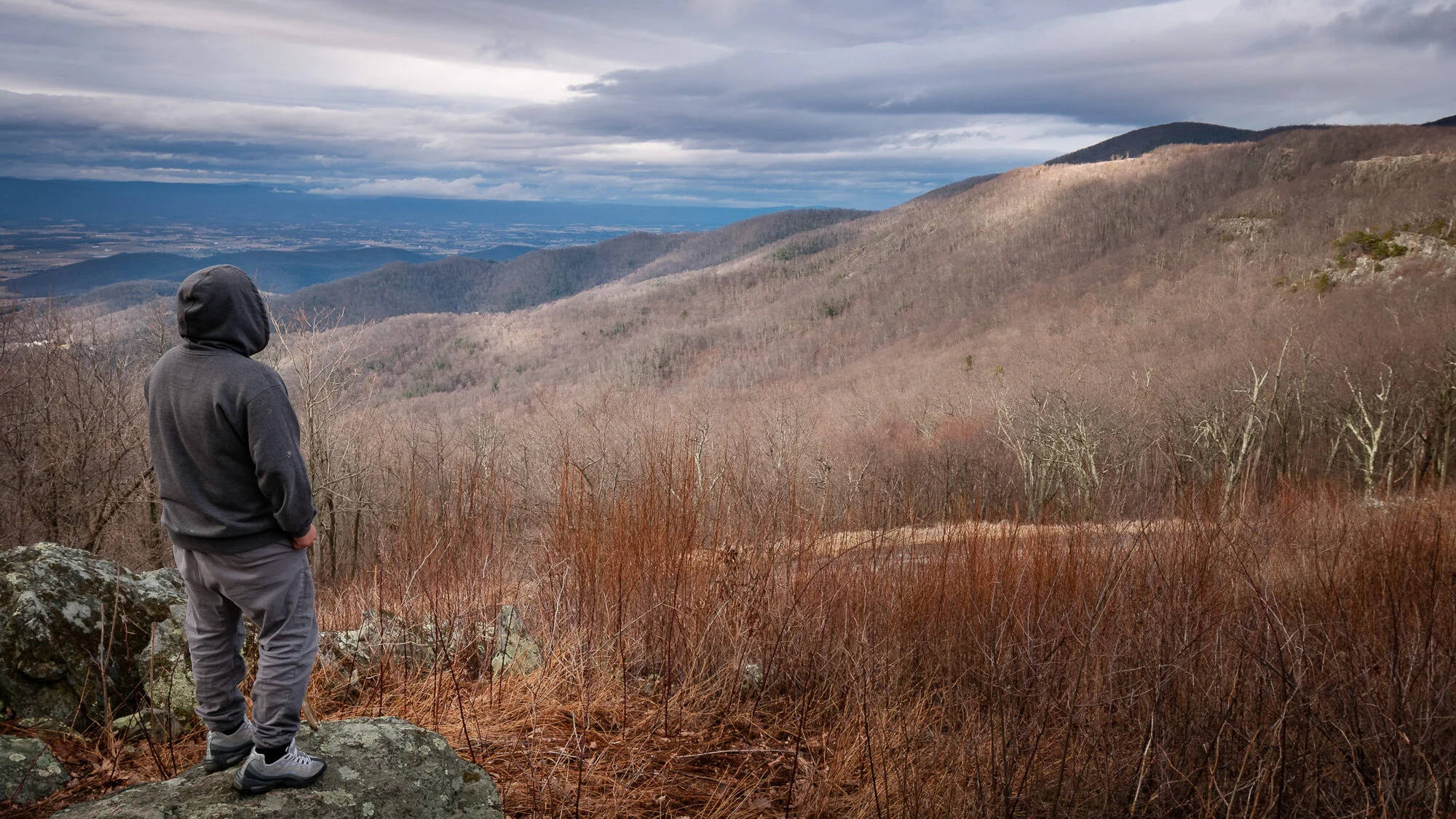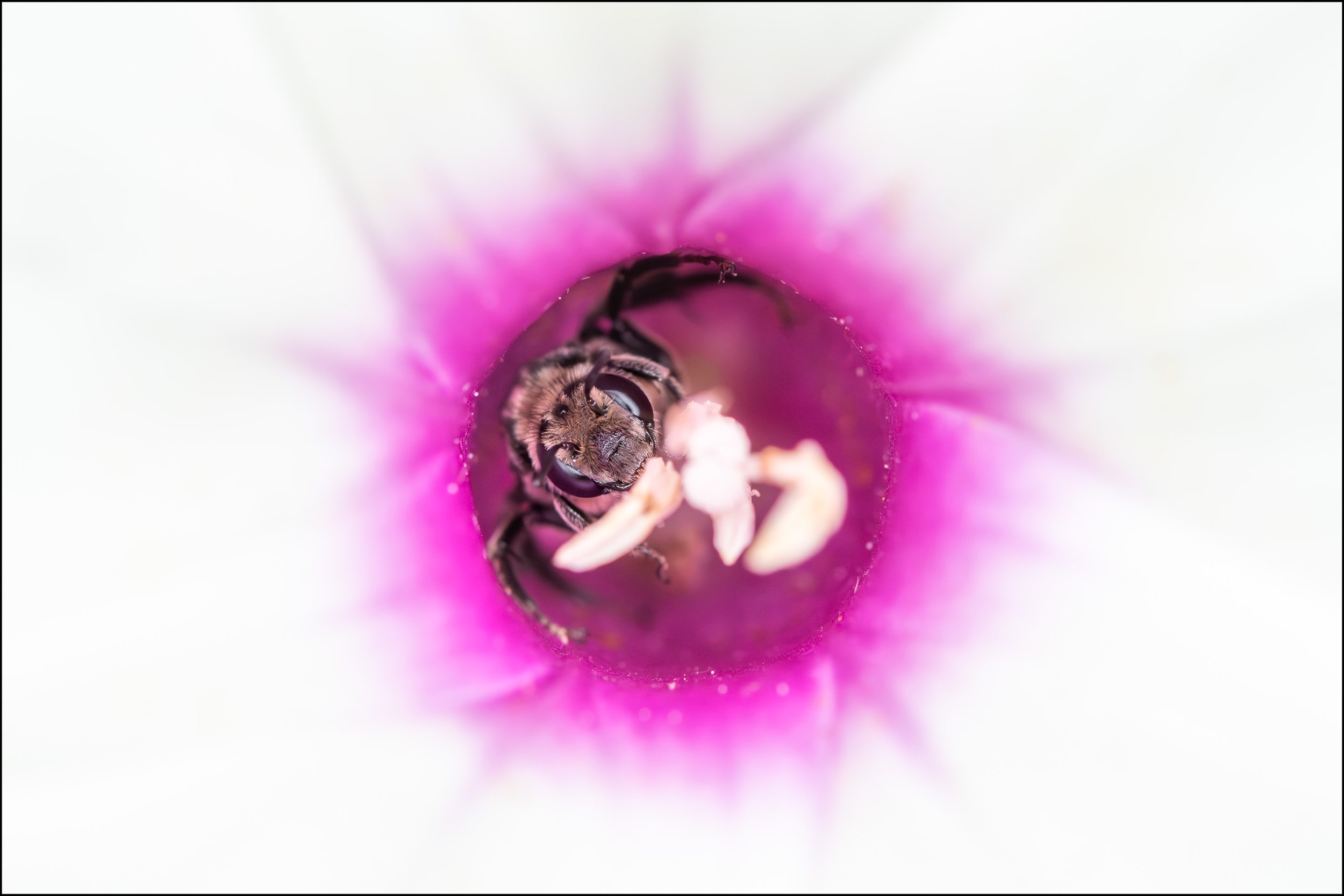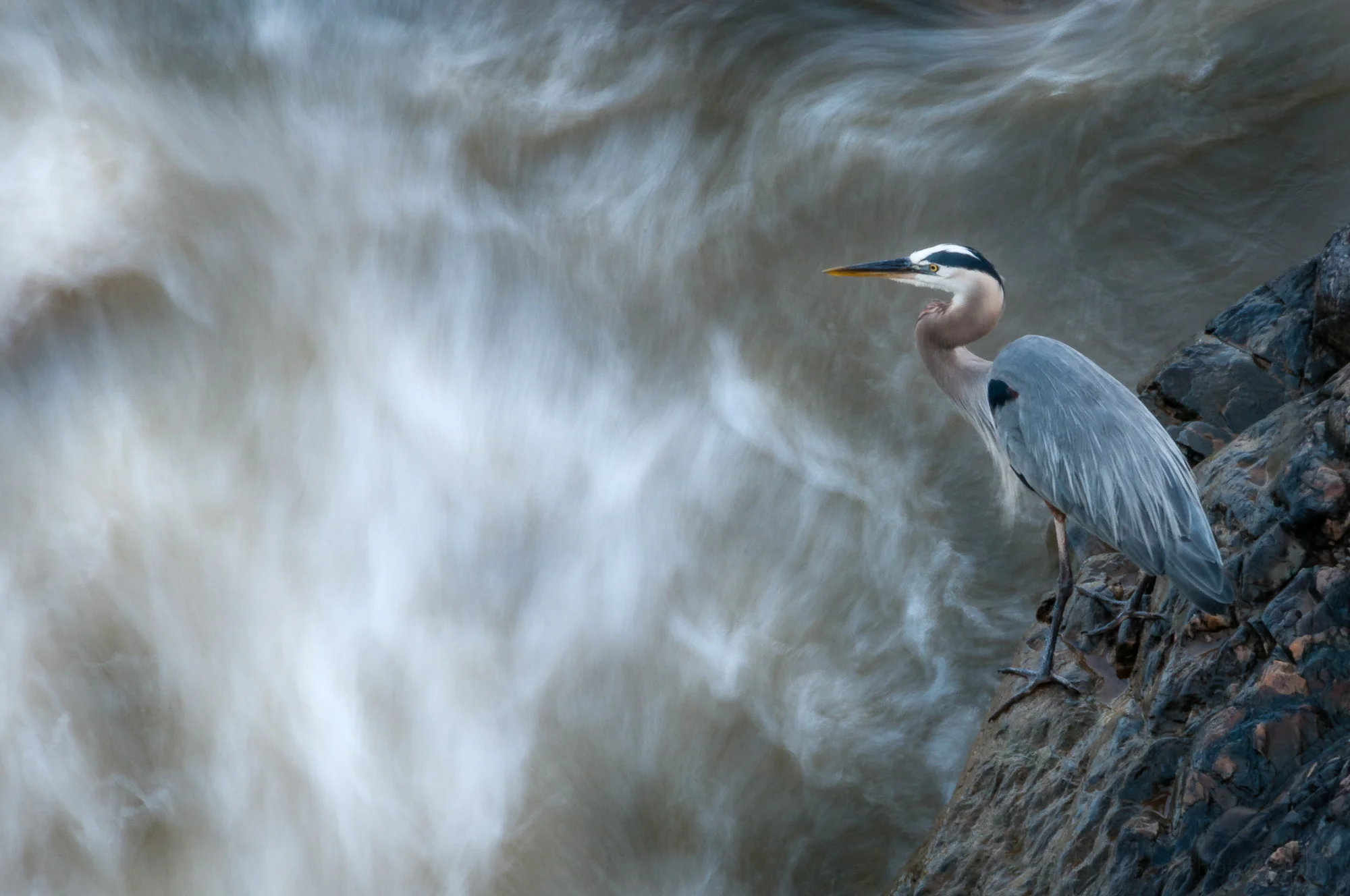Tech Talk
For those technically inclined, I was photographing with my 105mm macro lens. It was an overcast day so I had my ISO up a bit to better see into the darker regions and still keep a high enough shutter speed for me to handhold.
For the wider view I used an ISO of 800, an aperture of f/6.3 and a shutter speed of 1/640. These were general middle-of-the-road settings while I was exploring the scene.
When I moved closer to see inside the flower it might have made sense to raise the ISO to better see the much darker region, but I didn’t think of that and was working fast before the insect left the flower, so I stayed at ISO 800. I was much closer to the subject so I had the foresight to stop down my aperture to f/9 to try to get more of the insect and interior in focus. The closer you get the shallower the depth of field. Stopping down the aperture helps get a wider depth of field with more in focus, and at this close range the depth of field is very small even with smaller apertures. But stopping down the aperture requires a slower shutter speed (ah, physics!), in this case 1/320 second, which I hoped was still fast enough for a sharp image.
In the end I’m pleased with how it turned out.
